The American Perception of Anime: Blood, Legs, and Language
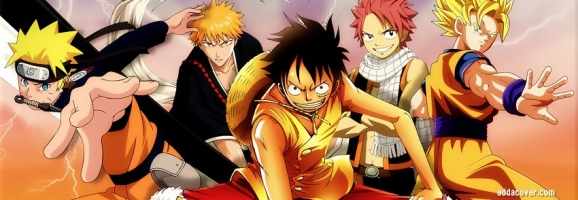
I was first introduced to anime when I was in sixth grade when I turned on the famed Toonami block of Cartoon Network and began watching Naruto. It was a short lived hook for me, because when I began discussing shows I liked with a couple other sixth graders Naruto entered the equation and I was quickly ridiculed. I never understood why I was made fun of or why a show I liked a lot was called stupid, but I stopped watching it anyway, just out of the negativity people seemed to have for it. At the time, I thought that was the end of my anime watching days.
I was reintroduced to anime in high school through some of my newfound friends, who were also avid watchers. At first, I was wary of starting up a trend that I got made fun of earlier in my life, but when I tried again, this time with the hit Black Cat, I was hooked for good. My horizons expanded on the anime front with Fullmetal Alchemist, Baccano, One Piece, Bleach, Fairy Tail, Soul Eater, and a comeback of Naruto. And through anime, I found a love of manga, the Japanese cousin to our comics. Though I had to continually defend my fondness for Japanese animation to some people, others were perfectly content with my choice of media.
Still, it stuck oddly in my head why some people were so against this unique and fun form of animation, especially when American shows such as Teen Titans and Avatar: The Last Airbender had many anime similarities. It was even more peculiar when Pokemon and Dragon Ball Z were immensely popular, as well as the Oscar-winning movie Spirited Away, even though they were from Japan. Somewhere, there was definite disconnect.
Anime was introduced to America in the 1960s via Robotech and Astro Boy, the latter which became an American feature film in 2009. Anime continued to crop up sporadically throughout the 70s and 80s, and didn’t gain a major foothold until the 90s. During the 70s and 80s, anime had gotten a bad name. This mostly this stems from the cultural divide. Anime has frequently been more violent, sexualized, and suffers greatly from a language barrier and different culture..
Anime in America took its real big hit by the Action for Children’s Television, or ACT, not to be confused with the standardized test of the same name. It moved to censor anime on multiple platforms, including “material containing homoeroticism, gender ambiguity, or anything that suggested the main protagonist was not one hundred percent ‘good-guy material,’” (Chambers, 96). Anime protagonists are rarely as clean cut as many American heroes. Many have complicated back stories that reveal their sometimes amoral motives, and “often [have] vices, thus making them human,” (Chambers, 96). In anime, the characters aren’t always about being a hero, but about being human.
One of the biggest criticisms of anime has been the extensive violence it contains. Many of the most popular animes that have reached America are fighting focused, not that terribly different from some American cartoons and live action shows. However, the violence can sometimes be graphic with spurts of blood and gore and interspersed with swear words and violent dialogue. And at various times, a fight ends with one character, usually the villain, dying. In a research paper, it was stated, “The Japanese acknowledged that death was a part of life by occasionally allowing characters to die,” (Chambers, 96). This allowance of death states that the characters are not immortal, a concept that American shows are prone to, and it keeps tension with the audiences, because they never know who will win.
This amount of violence is another part of the cultural divide. Japanese culture is more accepting of violence, as stated in a New York Times article, “the public’s tolerance for blood and guts on TV has traditionally been much higher than it is in the United States,” (Rutenberg). Many anime have short spurts of high intensity violence, usually only lasting a couple minutes of the programming, then switches back to dialogue. This is frequent in many of the popular animes that have reached the United States, where the comedies, dramas, sports adventures, and romance genres, which are usually devoid of violence, never make it to a programming block.
Another criticism of anime has been the sexuality involved with characters. Anime sexuality appears in two parts: nudity and clothing of the characters, usually associated with female characters, then the actual sexual orientation of a given character. Various female characters are portrayed as “necks are thin, the heads are big, the breasts are big, and the hips are small,” (Geary), and sometimes seen with skimpy clothing, and the male characters are usually heavily muscled and handsome. This has been the stereotype for Japanese anime, drawing the ire of Americans. The belief is that all anime is about long-legged, big-breasted women, when this isn’t the case. In most animes, if they have a character like this, there is normally only one and usually is portrayed as the most knowledgeable person in the world. Good examples of this are Nico Robin from One Piece, Rinslet Walker from Black Cat, and Tsunade from Naruto. When this isn’t the case, this type of character is the comic relief, albeit in a raunchy way.
Nudity is also an issue frequently brought up when discussing anime. It is no surprise that nudity in a cartoon is an issue, signally similar issues in American shows. The nudity expressed in anime was deemed pornography and therefore banned on principle. However, this anime porn was given a name, hentai, which is extremely violent and pornographic. In a research paper it stated, “violent actions that gave the entire anime genre a negative stereotype,” (Chambers, 95). In 90s, hentai was instrumental in giving anime a bad name because of its violence and pornography. Though anime has managed to distance itself from hentai, it still brings up questions about the genre itself.
The second part is the sexual orientation of a character. The Japanese like to play with gay, lesbian, and bisexual relationships, and a popular genre in anime is the “gender bender,” where a person’s gender is swapped. Until recent years, any anime with characters that are not straight, or have ambiguous genders, have been under scrutiny by Americans, and are rarely aired. This is another cultural divide issue. The Japanese are more relaxed about relationships that are not devotedly straight, and are aware that is simply a part of life. Americans tend to be more uptight about showing these types of relationships to audiences, especially when many anime were reaching younger viewers.
Last is the language barrier. All anime are originally in Japanese, which means that when they arrive in America, studios must remove all the dialogue and write similar sounding dialogue to replace what they had. This garnered criticism on several different platforms, one of the first being swear words. Some anime, especially the fighting oriented ones, are mingled with curse words, ‘damn, hell, and bastard’ being the most frequent. The use of profanity angered many viewers with young children, causing yet another rift in the anime name.
Another language barrier issue, this also stemming from the cultural divide, was the Americanization of Japanese culture. Due to anime being from Japan, much of the dialogue is meant for Japanese audiences. Studios would change the animation itself to fit American standards, as well as names, places, and food. This sometimes was minimal, but others it was huge, as in Pokemon, where all of the characters were given American names and the Pokemon themselves were renamed. Studios would “Americanized beyond recognition with infelicitous dubs, American names, and sometimes, mangled plot lines,” (Chambers, 96). This became an issue with some audiences, because they viewed it as censorship. The Americanization of anime sometimes, “alter[s] plot lines to make them more socially acceptable to Western audiences,” (Chambers, 95).
This Americanization of the culture created fansubbing. Fansubbing is “the practice of taking the original Japanese anime and translating it word-for-word in fan-made subtitles,” (Chambers, 96). Fansubbing became increasingly popular when very little anime was making it to American, but anime still had a relatively large fan base outside of Japan. The use of fansubbing allowed the circumvention of the Americanization dub or subtitle process. Fans would be able to get the same message across without compromising the storyline.
Anime has an interesting history with Americans. Over the years, it has taken a beating simply for being what it is. It was attacked because it’s a cartoon and cartoons are thought to be for kids. But without anime, shows like Family Guy, Futurama, and Robot Chicken wouldn’t be around. Recently, anime has taken a comeback and the name isn’t being as tarnished as it use to, but it still doesn’t have a good amount of glory as it should be awarded. I enjoy anime, and not because of its violence or sex, but because the characters are fun and relatable, the storylines are engaging, and overall, it’s an art that should be experienced.
Work Cited
Chambers, Samantha N Inez. “Anime: From Cult Following to Pop Culture Phenomenon.” The Elon Journal of Undergraduate Research in Communications 3.2 (2012): 94-101. Web. 7 Apr. 2013.
Geary, Joe. “Young Women (and More) in Anime.” Femspec 2004: 135,139,216. ProQuest. Web. 23 Apr. 2013 .
Harmon, Curtis. “Anime Overly Violent?” Anime Overly Violent? Worchester Polytechnic Institute, 14 Feb. 2001. Web. 10 Apr. 2013.
Rutenberg, Jim. “Violence Finds a Niche in Children’s Cartoons.” The New York Times. The New York Times, 28 Jan. 2001. Web. 10 Apr. 2013.
What do you think? Leave a comment.




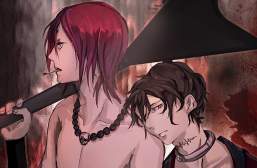
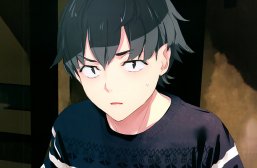
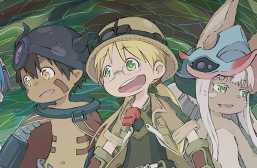
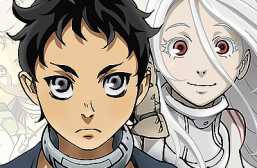
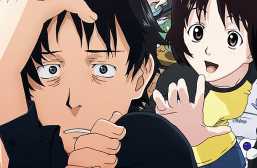
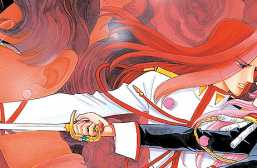
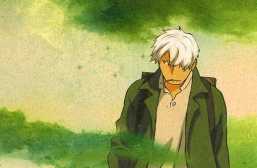
Really informative article, cheers for this.
It is a shame that such barrier was created back then which stopped anime finding a bigger audience in the west. I am happy to see that this barrier has been broken down since but not completely. Still a lot to go, and this article is helping, good job!
The article by Samantha Chambers is the best and most informative.
Very rarely have a read further–This time, the list of references was useful. If your goal was to get me interested in this, you did well.
Great article dude. The Americanizing of shows is what kills the stories a lot, plus some dubs are just terrible. It’s also weird how American shows sexualize everything, but when you animate it, it gets too far.
Also nice work cited. Gotta check those articles out.
Nice article. Growing up in Asia, I find it odd for people to denounce anime and associate it with many negative stereotypes when the TV shows/movies are basically showing the same thing, if not more extreme.
Another thing related to the cultural part is that as part of an individualistic culture, Americans seem to buy more into the superhero-save-the-day thing, as in Superman, Spiderman etc.. Japanese anime, however, are almost always about a team of loyal friends fighting alongside each other (see Naruto, Digimon and so on), and relationships are much more complicated. I think this also, in a way, leads American to stray away from anime.
This was so informative, I never knew that anime was censored to such an extent and in such ways! The situation for me as a British person (and one growing up on an island, just to isolate things further for an anime fan) was pretty similar to what you describe as the typical reaction of American non-fans: most people in my secondary school didn’t know what anime was, or some did and thought it was really creepy and sexualised. One kid used to make fun of my and my other anime-fan friends for apparently watching ‘hentai’ just for discussing anime at school! This is a far cry from Fushigi Yuugi, the first manga I ever read, or watching Fruits Basket and Full Metal Alchemist! I was also a big Naruto fan at around 14/15, I think it’s a common ‘gateway’ anime.
Maybe it’s because I’m at University now, but I find that anime is far more accepted these days, at least in Britain. I decided a couple of years back to stop feeling ashamed of watching anime (it’s bizarre to me now to think that I was) and just talk about it as something entertaining and fun, which it is, and even recommend shows to people based on what TV/films they like. Plus expos and cons are so huge now, and a lot of popular video games, as well as TV shows, have an anime-inspired style that I think has helped its exposure as a legitimate art form in the Western world.
Thanks for this article!
Really informative article, definitely enjoyed reading it.
As someone raised on mostly western animation, what series/films would you recommend (besides Miyazaki) for someone trying to get into and understand the medium? What would you say are seminal works instrumental to the development of anime as an important cultural product?
May I answer that?
Try the films by Makoto Shinkai 新海誠. They are short, with beautiful artwork and wonderful story line.
If you want anime series, then there are plenty of Gundam series to follow. I’ll personally recommend Neon Genesis Evangelion, a classic anime that I wrote an article about. In recent years there are brilliant series like Shinsekai Yori, Clannad, Puella Magi Madoka Magica etc.. They all have different characteristics that may or may not fit into the stereotypes mentioned in this article.
thanks! i’ve definitely heard a lot of great things about evangelion. I’ve also been interested in checking out Akira.
Also try Fullmetal Alchemist, Baccano, and Black Blood Brothers.
Didn’t Robotech air in the mid 80’s, rather than 1960’s?:
http://en.wikipedia.org/wiki/Robotech
Great article! I believe we should get over the cultural (western) preconceptions of anime and manga. MAny Hollywood productions have been inspired by anime/manga’s many zany concepts. Pacific Rim, for example, used an anime-type universe to tell a peculiar and world-scale story.
Thanks for writing this. Many people who don’t know what anime is tend to give it a negative name. If someone googles anime who isn’t familiar will be greeted with questionable fan art and nudity at some point. I think that turns many people away, which is truly unfortunate.
The nudity factor is a big turn away. As a teenage girl watching high school of the dead by myself I was barely able to get through it. It was absolutely awesome but still, the nudity may be much for some people so it really is unfortunate.
Thanks for writing this article. Really! A lot of thoughts had been floating around my circle of friends about anime history, but non of us ever really bothered to look into it, so the research is appreciated. The 80’s and 90’s especially, aside from Cartoon network showing DBZ and Pokemo, had anime in the backdoor of television.
I’m very glad you addressed the issues of sexuality in the medium. I can understand why many in the older gen. would be against this, but as you stated, it is a strong cultural divide.
Also, fabulous use of sources!
This is a truly informative article. I really resonate with you on this one. I always wish to show my friends shows like Samurai Champloo, Code Geass and Gintama. They all have a surprisingly amount of depth to it but the general population does tend to dismiss them on preconceived notion that they have about anime. It usually comes down to- It’s just cartoon, I don’t wanna read subs (totally recommend subs over dubs to better understand contextual stuff), Japanese are weird and I don’t want to watch little girls. The prevalence of “cuteness” in the form of little girls with”appropriate ages” does take away the general population in other countries from trying out anime.
This is a great article except for the one comment you make that paints the Japanese as accepting of homosexual relationships. This is untrue. They may be accepting of them in the abstract, such as in anime and manga, but in real life they are actually years behind the US in accepting it as a legitimate lifestyle. In fact the only openly homosexual entertainers regularly seen on TV in Japan are used and treated as jokes. The Japanese are ok with most anything done in anime and manga because they accept that it is fantasy and not necessarily meant to reflect reality. Unfortunately their actual level of acceptance of non-straight peoples is very low. If they don’t see it that is one thing, but the moment it becomes public knowledge its extremely frowned upon.
FINALLY.. SOMEONE WHO UNDERSTANDS THAT ANIME SHOULD BE ENJOYED AS A EXCITING EXEPERIENCE AND BEATIFUL ART.. THANK YOU FOR WRITING THIS ARTICLE..
Hey Boo, I LOVED THIS! I quite enjoy wanking to your words.
Boo, Me too ;P
Thanks for the great info! Going to use this for a research paper!
Nice, good info, original
So anime was frowned upon because of the violence,Nudity etc.
But yet they let shows like south park air? Get real people.
The main reason why America sees anime as only “boobs, blood, and ultraviolence” is because America thinks anything that is handdrawn is “for babies”, and that anything that is live action with actors is “serious and mature and real”. At least, that stigma has sort of let up since the 1990s, but not by that much.
If anything, it’s because America has had a history of censoring comics and animation since the beginning of the 20th Century and the white conservative/ultra right wing standard wanted to start the Thousand Year Kingdom but thought Baby Jesus would cry because of Beavis and Butthead. This doesn’t even get into how American norms include not having an imagination and how creative thinking is always frowned upon in mainstream society. Unless it’s tied with war, exploitation, and money.
I only talk smack because a country that claims “freedom, equality, and justice” ought to live up to those things, else they deserve to be sued for all it’s worth.